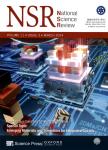Light-driven directional ion transport for enhanced osmotic energy harvesting
Light-driven directional ion transport for enhanced osmotic energy harvesting作者机构:Max Planck Institute of Colloids and InterfacesDepartment of Colloid Chemistry Key Laboratory of Bio-inspired Smart Interfacial Science and Technology of Ministry of EducationSchool of ChemistryBeihang University State Key Laboratory of New Textile Materials and Advanced Processing TechnologiesWuhan Textile University State Key Laboratory of Catalysis2011-iChEMDalian National Laboratory for Clean Energy (DNL)Dalian Institute of Chemical Physics(DICP)Chinese Academy of Sciences State Key Laboratory of Advanced Technology for Materials Synthesis and ProcessingWuhan University of Technology
出 版 物:《National Science Review》 (国家科学评论(英文版))
年 卷 期:2021年第8卷第8期
页 面:178-185页
核心收录:
学科分类:0710[理学-生物学] 071011[理学-生物物理学] 07[理学]
基 金:financially supported by the Max Planck Society National Key Research
主 题:ion pump ion transport nanofluidic porous membrane carbon nitride
摘 要:Light-driven ion(proton) transport is a crucial process both for photosynthesis of green plants and solar energy harvesting of some archaea. Here, we describe use of a TiO2/C3N4semiconductor heterojunction nanotube membrane to realize similar light-driven directional ion transport performance to that of biological systems. This heterojunction system can be fabricated by two simple deposition steps. Under unilateral illumination, the TiO2/C3N4heterojunction nanotube membrane can generate a photocurrent of about 9 μA/cm~2, corresponding to a pumping stream of ~5500 ions per second per nanotube. By changing the position of TiO2and C3N4, a reverse equivalent ionic current can also be realized. Directional transport of photogenerated electrons and holes results in a transmembrane potential, which is the basis of the light-driven ion transport phenomenon. As a proof of concept, we also show that this system can be used for enhanced osmotic energy generation. The artificial light-driven ion transport system proposed here offers a further step forward on the roadmap for development of ionic photoelectric conversion and integration into other applications, for example water desalination.



